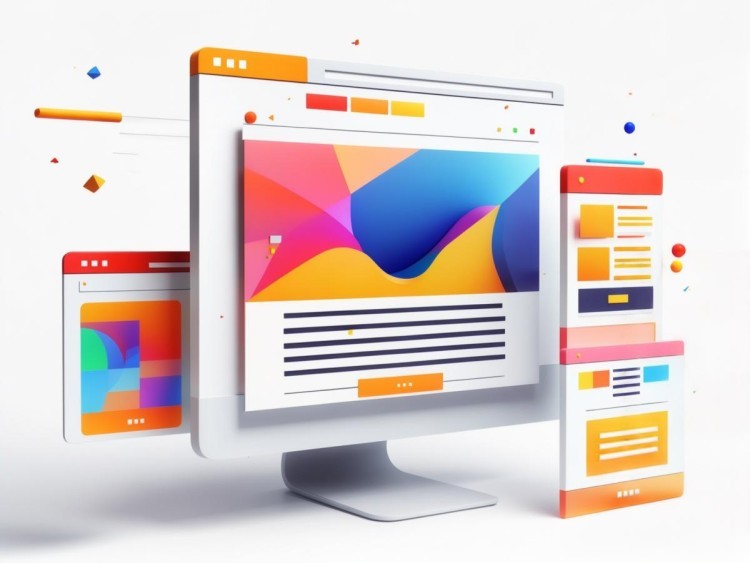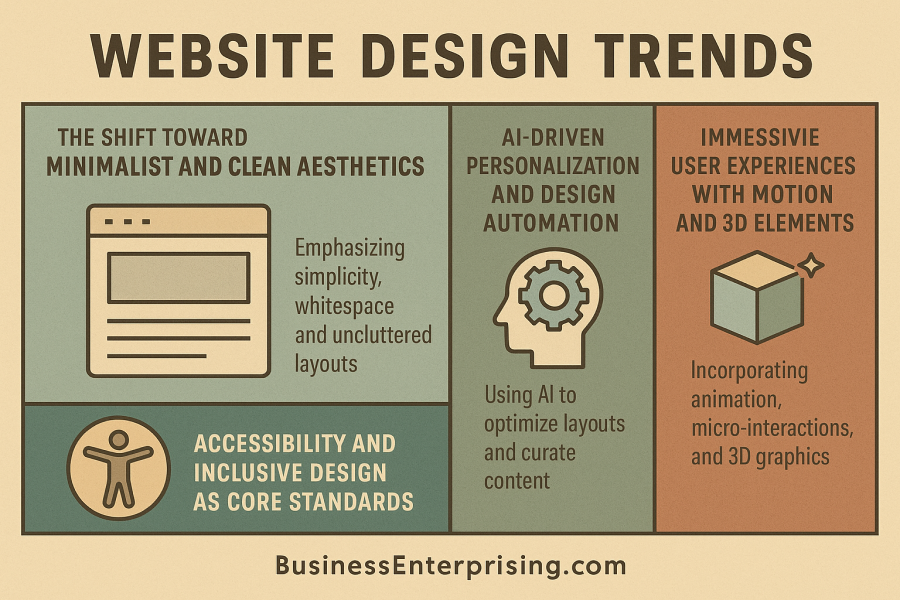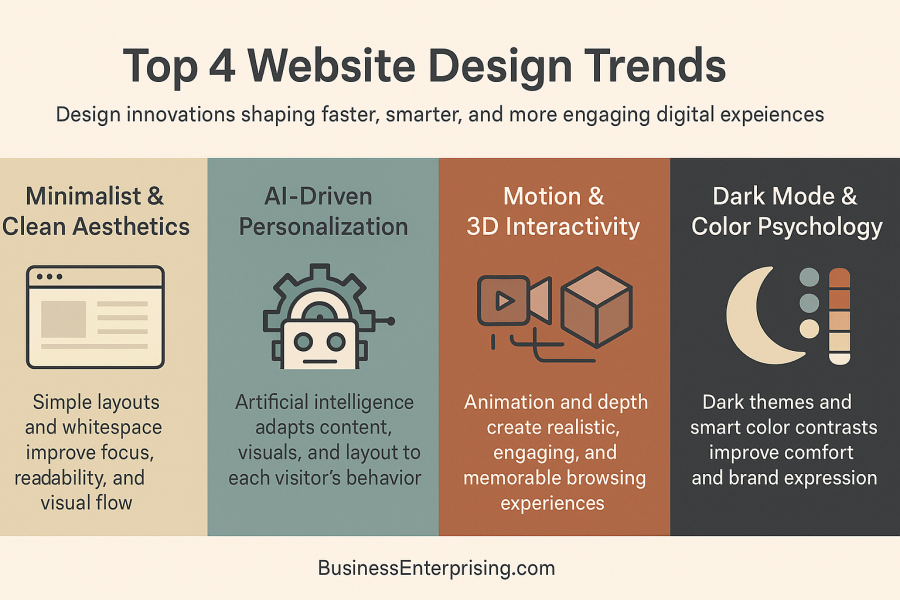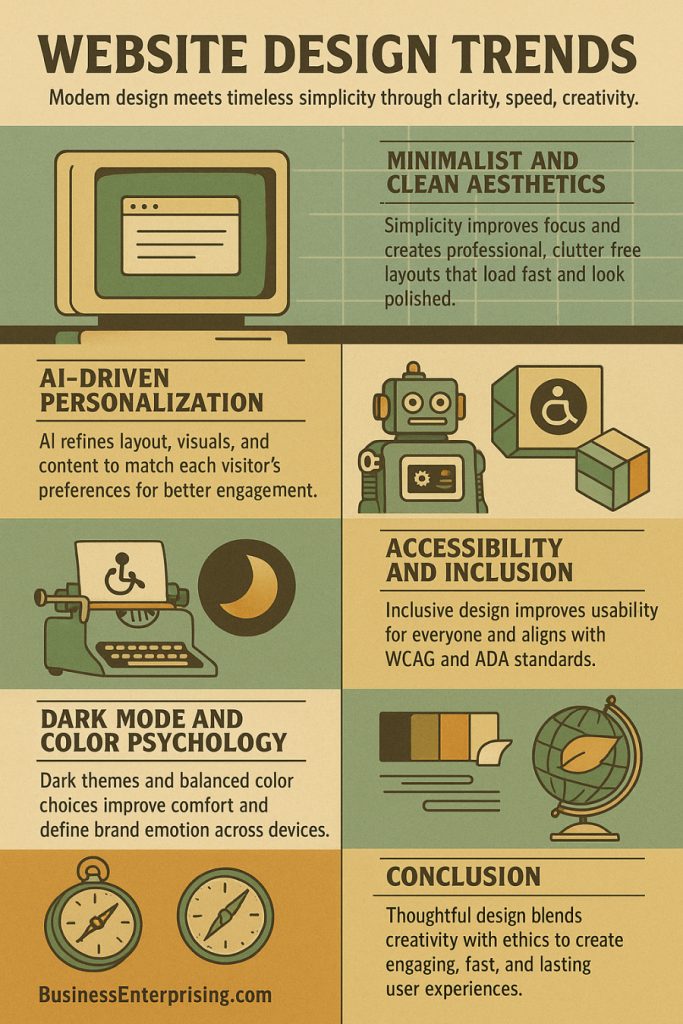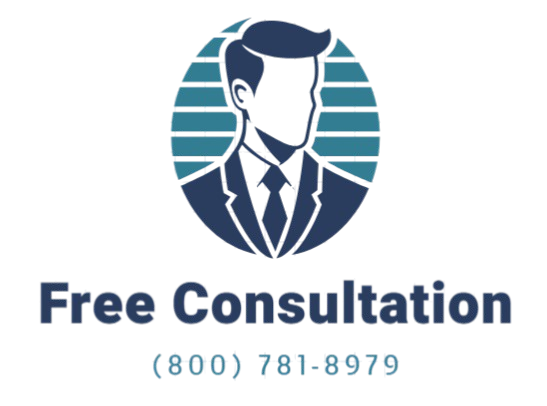
Additionally, web design now blends creativity with performance. Simplicity leads to stronger engagement because users find what they need faster. Color, motion, and typography each play a role in how visitors interpret your brand. Clean layouts paired with thoughtful content make information easier to process. As technology advances, you gain tools that automate tasks, improve accessibility, and expand what design can accomplish.
Moreover, design has become an ethical and strategic decision. You shape how people connect with your content through usability, sustainability, and inclusivity. By reducing clutter and improving structure, your site feels more trustworthy and professional. Accessibility standards like WCAG and ADA are no longer optional; they define modern professionalism. Therefore, building a responsive and responsible website strengthens your reputation while serving a wider audience.
When you approach design with purpose, you create experiences that support both users and goals. Every choice, from color scheme to hosting, influences performance and perception. As you explore current trends, focus on what improves clarity, speed, and comfort for your visitors. Strong design combines creativity with care, resulting in websites that perform well, look refined, and leave lasting impressions.
The Shift Toward Minimalist and Clean Aesthetics
Minimalist and clean aesthetics continue to dominate modern design because they create clarity, focus, and ease of use. When you simplify your layout, you guide visitors directly to what matters most. This approach removes distractions and creates a smoother visual flow. It also allows every design element to have a clear purpose, helping users interact with confidence. Minimalist design often uses neutral color schemes, balanced typography, and intentional spacing that make your brand appear organized and credible.
Additionally, simplicity improves how quickly your website loads. Large image files, cluttered graphics, and heavy animations slow performance, especially on mobile devices. By keeping layouts light and uncluttered, you improve loading speed and reduce bounce rates. Faster websites create better first impressions and keep users engaged longer. Whitespace also plays a major role. It gives visual breathing room, making pages easier to read and navigate. Visitors can process your content faster, leading to more meaningful interactions and higher conversions.
Furthermore, minimalist design enhances mobile responsiveness. When elements are clean and well-structured, your site adapts naturally across screen sizes. Clear typography and defined visual hierarchy help users find what they need without frustration. Many of the most effective website design trends now emphasize this harmony between simplicity, speed, and functionality. By adopting a minimalist aesthetic, you communicate professionalism while giving your audience a calm and enjoyable experience. Over time, this clarity builds trust and keeps users returning to your site.
AI-Driven Personalization and Design Automation
Artificial intelligence has become a key influence in how websites are designed, built, and experienced. AI-driven personalization allows you to tailor content, visuals, and layouts to each visitor. This technology studies behavior, preferences, and browsing patterns to predict what users want before they ask. As a result, websites feel more intuitive and responsive to individual needs. When users encounter designs that match their interests, engagement and time on site naturally increase.
Additionally, AI tools now help with layout optimization. They analyze where users click, scroll, or pause to suggest better placement of buttons, menus, or images. This data-driven feedback lets you make quick adjustments that improve usability. Automated testing also identifies which visual combinations perform best, saving time and reducing guesswork. Over time, these systems learn what design structures keep visitors active and what causes them to leave.
Moreover, AI simplifies image and content selection. Algorithms can recommend visuals that complement your brand tone or resonate with audience behavior. They can also adapt featured products or headlines in real time. As these features evolve, AI becomes a creative partner rather than a simple tool. Among modern website design trends, this partnership between designers and intelligent systems represents a major shift in efficiency and user satisfaction.
By integrating AI-driven automation into your workflow, you can maintain design consistency and speed up production. This technology allows you to focus more on creativity and less on repetitive tasks. When personalization and automation align, your website becomes smarter, more engaging, and far more relevant to each visitor.
Immersive User Experiences with Motion and 3D Elements
Motion and 3D elements have transformed how users experience websites. Subtle animation and movement make interactions feel natural and responsive. When you add motion thoughtfully, it directs attention without overwhelming the viewer. This approach creates rhythm and flow that keeps users curious and engaged. A scrolling effect, button hover, or animated transition can make your website feel more alive.
Additionally, micro-interactions play a large part in improving user experience. These small visual responses acknowledge each action a visitor takes, such as clicking a link or submitting a form. They provide feedback that confirms the system is responding correctly. Over time, these details build trust and make navigation feel smoother. Therefore, when you design with purpose, motion becomes a communication tool, not decoration.
Moreover, 3D graphics have moved beyond entertainment and are now standard across many professional websites. They allow you to display products, services, or concepts from multiple angles with visual depth. These visuals can increase comprehension and make digital experiences more realistic. As technology advances, loading times for 3D content continue to improve, allowing broader use on mobile devices.
Among modern website design trends, motion and 3D design represent a clear shift toward immersion and interactivity. When balanced correctly, these features strengthen your brand identity and create lasting impressions. By combining motion, texture, and responsiveness, you can create a visual environment that keeps users engaged longer. The result is a site that feels fluid, intuitive, and memorable from the first interaction.
Accessibility and Inclusive Design as Core Standards
Accessibility and inclusive design have become core standards for every professional website. These principles go beyond compliance and reflect a commitment to usability for all people. Accessibility guidelines such as WCAG and ADA outline how to make websites functional for those with visual, auditory, or mobility limitations. When you follow these standards, you create a digital environment where everyone can interact with your content comfortably. Accessibility also improves readability, organization, and clarity for every visitor.
Additionally, inclusive design promotes empathy by considering different ways people access and process information. You can apply this through readable typography, consistent layouts, and color contrast that supports all users. Features such as keyboard navigation, descriptive alt text, and closed captions make a real difference. They help visitors who rely on assistive technologies while improving the experience for everyone else. Therefore, accessibility strengthens both usability and brand integrity.
Moreover, inclusion is now an expectation, not an optional feature. Many businesses recognize that accessible websites reach larger audiences and perform better across devices. These practices reduce frustration, improve conversion rates, and communicate care for user experience. Among current website design trends, accessibility and inclusion have become strong indicators of professionalism and trustworthiness. By building with these principles from the start, you show responsibility, awareness, and respect for all users.
When you make accessibility part of your design process, you create lasting benefits for your brand and your audience. Your site becomes easier to use, faster to load, and more welcoming to everyone. Over time, this approach leads to stronger engagement, better performance, and a more positive reputation across your industry.
Dark Mode and Color Psychology in Modern Interfaces
Dark mode has become one of the most requested features in digital design. Users appreciate how it reduces eye strain and provides a sleek appearance. When paired with smart color choices, dark interfaces feel modern and comfortable for extended viewing. Additionally, many people find dark themes more energy-efficient on mobile devices, especially those with OLED screens. This preference has influenced how designers think about balance, contrast, and mood across digital experiences.
Color psychology plays a large role in shaping perception and engagement. Each color evokes a different response that affects how users interact with your content. Warm colors can create excitement, while cool tones often feel calm and reliable. Gradients have also returned as a design favorite. They add depth and dimension without cluttering layouts. Therefore, color decisions influence both usability and emotion.
Moreover, designers now experiment with dynamic palettes that shift based on system settings or time of day. This adaptability improves user comfort and accessibility. Consistent contrast ratios also help users read text more easily and interact with elements confidently. When applied with purpose, color enhances navigation and strengthens brand identity. As users move between devices, thoughtful color design maintains a sense of visual continuity.
Among current website design trends, dark mode and intentional color psychology define modern digital aesthetics. They create interfaces that feel both functional and expressive. By selecting colors with care, you guide attention, support usability, and communicate your brand’s tone. Over time, this balanced approach helps you create digital experiences that are visually engaging and emotionally consistent across every device.
Sustainable and Performance-Focused Design Practices
Sustainable design has become a defining focus in modern web development. More designers are prioritizing lightweight code, faster performance, and energy efficiency. These decisions reduce environmental impact while improving the user experience. When you build a website that consumes less data and power, it performs better on all devices. This approach also reflects a growing awareness that digital products carry physical costs through servers, bandwidth, and electricity.
Additionally, green hosting has gained attention among businesses seeking ethical technology choices. Hosting providers that use renewable energy contribute to lower carbon emissions. Choosing these services supports sustainability without sacrificing performance. Therefore, by pairing efficient code with responsible hosting, you make a meaningful environmental difference. Optimizing image sizes, caching data, and minimizing scripts also decrease server demand. These small improvements combine to create faster, cleaner, and more responsible websites.
Moreover, performance-focused design improves accessibility and engagement. Faster load times lead to higher visitor retention and better search visibility. Lightweight designs also reduce frustration for users with slower internet connections. When your site runs smoothly, it feels reliable and professional. Among current website design trends, sustainability and performance now rank alongside aesthetics and usability as key considerations. Businesses recognize that speed, efficiency, and ethics can align naturally in digital design.
By integrating sustainable practices into your development process, you show long-term thinking and respect for both users and the environment. Every design decision, from color choice to hosting provider, influences your site’s footprint. When sustainability becomes part of your creative process, you produce experiences that are efficient, engaging, and responsible.
Conclusion
Modern design continues to evolve with purpose and awareness. Every choice, from layout to performance, influences how users experience your website. By studying current website design trends, you can make decisions that align creativity with functionality. Each trend reflects a shift toward better communication, improved accessibility, and meaningful engagement. These changes highlight how design serves both business goals and user needs.
Additionally, strong design focuses on clarity and efficiency. When your website loads quickly and feels intuitive, visitors stay longer and interact more. Simplicity, sustainability, and inclusivity work together to create trust and consistency. Therefore, the most effective designs combine visual appeal with technical precision. They are not about decoration but about guiding users toward understanding and action.
Moreover, good design grows through adaptation. As technology advances, your website should evolve with it. Responsive layouts, AI-driven personalization, and ethical hosting practices will shape how digital experiences develop. These choices influence perception and set the tone for how people view your brand. By staying aware of what drives engagement, you position your business for long-term growth.
Your website represents how your company communicates with the world. Every design decision sends a message about what you value. When you build with purpose, you create experiences that last beyond trends. Over time, consistency and thoughtful design will keep your audience returning and your brand respected. True progress comes from combining innovation, simplicity, and responsibility in every digital interaction.
